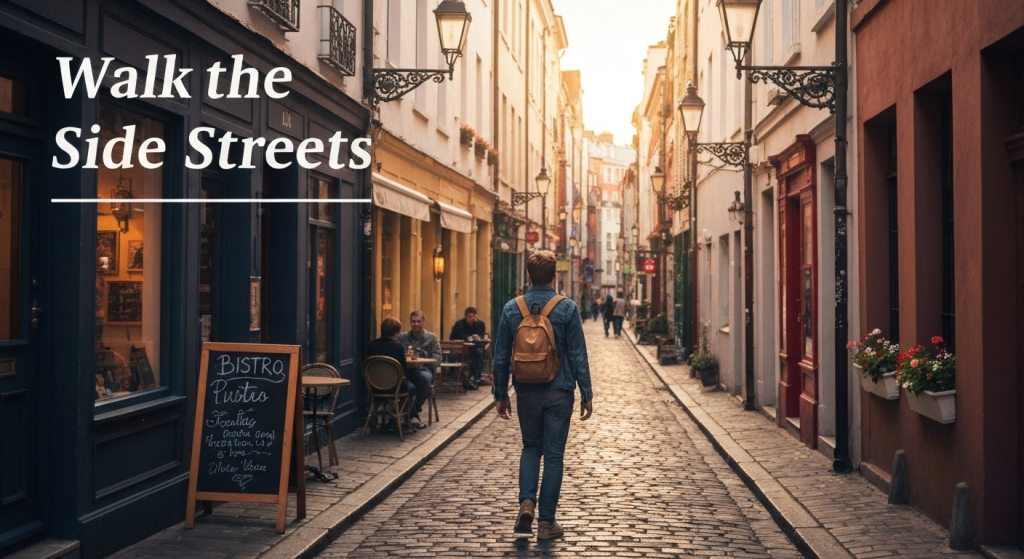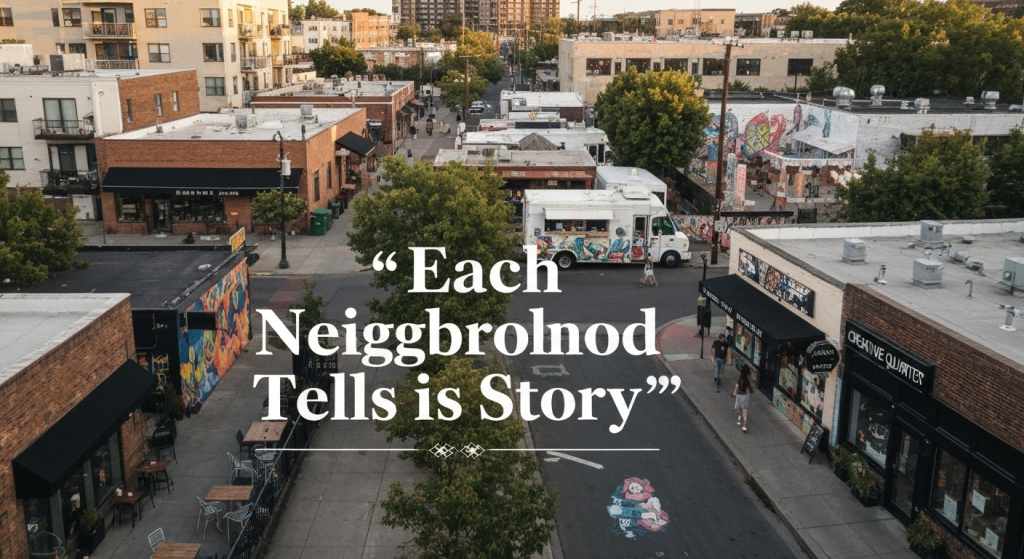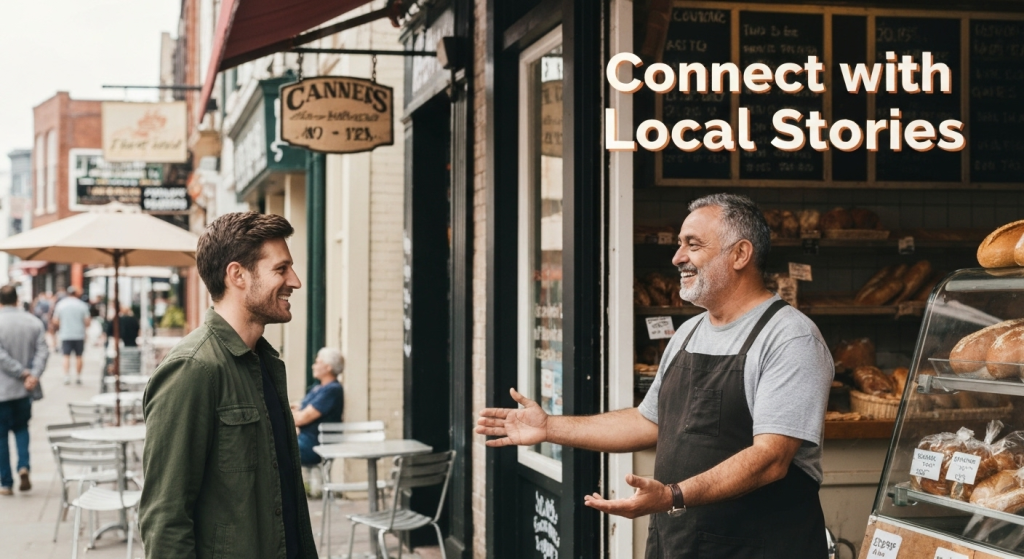Hidden gems in cities exist everywhere, but most travelers never find them. After five years as a professional travel consultant and urban explorer, I’ve discovered that the best local spots aren’t in guidebooks. They’re tucked away in neighborhoods where locals actually live and work.
My name is Mahnoor Farooq, and I’ve spent the last five years helping travelers discover authentic experiences in over 150 cities worldwide. Through countless hours of street walking, local conversations, and deliberate exploration, I’ve developed a systematic approach to uncovering the places that make each city unique. What started as personal curiosity became my professional expertise when clients kept asking: “How do you always find these amazing places?”
The truth is, finding hidden gems isn’t about luck. It’s about strategy, patience, and knowing where to look.
What Makes a Place a True Hidden Gem
Real hidden gems share specific characteristics that separate them from tourist traps. These places offer authentic experiences that reflect the city’s genuine character, not a manufactured version designed for visitors.
Authentic local atmosphere defines true hidden gems. You’ll notice more locals than tourists, conversations happen in the native language, and the environment feels natural rather than staged. The staff recognizes regular customers, and the pace matches local life rhythms rather than tourist expectations.
Unique character sets hidden gems apart from chain establishments. Each location has its own story, décor reflects local culture, and the offerings showcase regional specialties or personal creativity. You won’t find identical versions in other cities.
Reasonable pricing often indicates authenticity. While not always cheap, hidden gems typically offer fair value that locals can afford regularly. Extremely high prices usually signal tourist-focused businesses.
My Personal Method for Discovering Local Spots
After years of trial and error, I developed a systematic approach that consistently uncovers remarkable places. This method works whether I’m exploring my hometown or visiting a new continent.
The Walking Strategy

Walking remains the most effective way to discover hidden gems. I start each exploration session by choosing a neighborhood that locals frequent but tourists typically skip. Residential areas, business districts during lunch hours, and neighborhoods near universities often yield the best results.
My walking route follows a specific pattern. I avoid main streets initially, instead focusing on side streets and alleys where rent costs less and authentic businesses can afford to operate. I spend at least two hours per neighborhood, moving slowly enough to notice details that reveal interesting places.
Key walking indicators help identify potential hidden gems:
- Lines of locals waiting, especially during off-peak hours
- Handwritten signs or menus in the local language
- Mismatched furniture that suggests organic growth
- Sounds of genuine conversation and laughter
- Smells that make you curious about the source
The Local Network Approach
Building connections with locals accelerates the discovery process significantly. I’ve found that certain types of people are particularly knowledgeable about their city’s hidden gems and willing to share recommendations.
Taxi and rideshare drivers spend their days navigating the city and often know excellent local spots. I always ask where they eat lunch or grab coffee during long shifts. Their recommendations lead to places that serve locals throughout the day.
Local shop owners in non-tourist areas understand their neighborhoods intimately. I visit small bookstores, pharmacies, or hardware stores and ask where the owner recommends eating or relaxing nearby. These conversations often reveal community gathering spots that outsiders rarely find.
Service industry workers encounter diverse parts of the city through their jobs. Hairstylists, bank tellers, and postal workers interact with local residents all day and know which places locals actually frequent rather than just recommend to visitors.
| Local Contact Type | Best Time to Ask | Most Reliable For |
|---|---|---|
| Taxi Drivers | During longer rides | Authentic restaurants, late-night spots |
| Shop Owners | Slow afternoon hours | Neighborhood favorites, coffee shops |
| Service Workers | Near closing time | Local hangouts, weekend spots |
| Apartment Building Staff | Morning or evening | Resident recommendations, hidden bars |
Digital Tools That Actually Work
While real exploration happens on foot, certain digital tools enhance the discovery process when used strategically. I avoid mainstream review platforms for initial research, instead focusing on tools that reveal local preferences.
Local social media groups provide insider information that never appears in travel guides. I search for neighborhood Facebook groups, resident forums, and local Instagram hashtags. Posts about community events, local business celebrations, or resident recommendations often mention places worth investigating.
City-specific apps designed for locals rather than tourists sometimes reveal interesting spots. Transit apps show which stations have the most foot traffic, food delivery apps reveal popular local restaurants, and local event apps highlight community gathering places.
Reverse engineering popular spots helps identify similar hidden gems. When I find a local favorite that’s becoming too crowded, I research what made it special originally. Then I look for places with similar characteristics in different neighborhoods.
Timing Your Exploration for Maximum Success
Timing dramatically affects your ability to discover and experience hidden gems. Each time of day and week offers different opportunities to uncover authentic local experiences.
Weekday Morning Discoveries

Early weekday mornings reveal a city’s working rhythm and the places that fuel local life. Between 7 AM and 9 AM, I focus on discovering breakfast spots, coffee shops, and early-opening establishments that cater to residents starting their day.
Local breakfast spots during weekday mornings showcase authentic morning culture. I look for places with quick service, regular customers who order without looking at menus, and offerings that reflect local morning preferences. These establishments often transform into different experiences during lunch or evening hours.
Coffee culture observation reveals community social patterns. I note which coffee shops have customers who linger and chat versus those serving people rushing to work. The lingering spots often host interesting conversations and community interactions throughout the day.
Lunch Hour Intelligence
Lunch hours between 12 PM and 2 PM provide excellent intelligence about where locals actually eat. Office workers, shop employees, and local residents make quick decisions based on quality, value, and convenience rather than tourist appeal.
Following the local lunch rush leads to establishments that prioritize speed and satisfaction over ambiance. These places often offer the best value and most authentic flavors because they depend on repeat local customers rather than one-time tourist visits.
Observing ordering patterns reveals menu highlights and local preferences. When I see multiple customers ordering the same dish or the staff recommending specific items, I know these represent the restaurant’s genuine specialties rather than items designed for tourist expectations.
Evening and Weekend Exploration
Evening hours and weekends reveal where locals spend their leisure time. These periods offer opportunities to discover entertainment venues, social gathering spots, and places that transform after dark.
Weekend morning markets often feature local vendors, community interactions, and specialties that aren’t available during weekday visits. I arrive early when vendors are setting up to observe which stalls attract the longest lines throughout the morning.
Evening neighborhood walks reveal bars, restaurants, and entertainment venues that come alive after dark. I pay attention to which places have steady streams of local customers versus those working hard to attract passing foot traffic.
Recognizing Red Flags and Tourist Traps
Experience has taught me to quickly identify signs that a place caters primarily to tourists rather than locals. Recognizing these red flags saves time and leads to more authentic discoveries.
Visual Warning Signs
Certain visual cues immediately signal tourist-focused establishments. Multiple language menus with identical translations, aggressive street-level promotion, and photo displays of food outside restaurants often indicate places designed for tourist consumption rather than local enjoyment.
Uniformed staff pushing tourist activities, souvenir displays mixed with food service, and pricing in major foreign currencies suggest establishments that prioritize tourist spending over authentic local experiences.
Behavioral Indicators
Staff behavior reveals whether a place serves locals or tourists. Overly enthusiastic welcomes, immediate English responses regardless of your initial language choice, and detailed explanations of obvious items suggest tourist-focused service training.
Locals’ absence during peak hours, tourists taking photos instead of eating, and conversations dominated by sightseeing discussions indicate places that have lost their authentic local character.
| Red Flag Category | Specific Signs | What It Means |
|---|---|---|
| Pricing | Major currency pricing, no local price options | Tourist-targeted establishment |
| Staff Behavior | Overly rehearsed welcomes, immediate English | Trained for tourist service |
| Customer Base | Majority tourists, photo-taking over eating | Lost local authenticity |
| Marketing | Street promoters, multiple language signs | Revenue focused on tourist traffic |
Neighborhood-Specific Strategies

Different neighborhood types require different approaches for discovering hidden gems. Understanding each area’s character and rhythm increases success rates significantly.
Residential District Exploration
Residential neighborhoods often contain the most authentic local experiences because businesses serve people who live nearby rather than pass through occasionally. These areas require patience but offer the most genuine discoveries.
Morning and evening hours work best in residential districts when people are commuting, walking dogs, or running errands. I follow foot traffic patterns to discover which local businesses residents actually use regularly.
Apartment building proximity often indicates authentic local businesses. Places located near housing developments or apartment complexes typically cater to residents’ daily needs rather than special occasion dining or tourist experiences.
Business District Opportunities
Business districts during lunch hours and after-work periods reveal where local workers actually spend their money and time. These areas offer different hidden gems focused on convenience, value, and quality.
Food trucks and casual spots in business districts often provide better quality and value than formal restaurants because they depend on repeat customers making quick decisions based on previous experiences.
After-work gathering spots reveal where locals decompress and socialize. These places often transform from quiet daytime establishments into community social hubs during evening hours.
Cultural Quarter Discoveries
Arts and cultural neighborhoods often contain hidden gems that blend creativity with local culture. These areas require different observation skills to separate genuine local spots from tourist-focused cultural experiences.
Artist-frequented establishments often offer unique atmospheres and authentic local character. I look for places with local art displays, creative menu offerings, and customers engaged in creative discussions rather than tourist photography.
Community event venues sometimes double as hidden gem restaurants, bars, or coffee shops during non-event hours. These spaces often reflect the neighborhood’s creative character while serving local residents’ daily needs.
Building Relationships with Local Business Owners

Developing genuine relationships with local business owners transforms occasional discoveries into ongoing access to insider knowledge. These relationships provide the deepest level of local insight and often lead to experiences unavailable to casual visitors.
Authentic Engagement Approaches
Genuine curiosity about their business story opens more doors than generic compliments. I ask about how long they’ve been in the neighborhood, what changes they’ve observed, and what they’re most proud of serving. These conversations reveal passion and often lead to recommendations for other authentic local spots.
Regular patronage when possible demonstrates respect for their business and investment in the local community. Even during single visits to distant cities, I express appreciation for their service and ask permission to recommend their establishment to others.
Cultural sensitivity and respect for local customs and business practices shows understanding that goes beyond transactional tourist interactions. I observe how locals interact with the business and mirror appropriate behavior rather than expecting accommodation for tourist preferences.
Leveraging Owner Networks
Local business owners often know other authentic establishments through supplier relationships, neighborhood associations, and personal friendships. Cross-referrals between trusted businesses frequently lead to discoveries that never appear in public recommendations.
Asking for specific occasion recommendations works better than general requests. Instead of “Where else should I go?” I ask “Where would you take your family for a celebration?” or “Where do you go when you want to try something new?” These specific questions generate more thoughtful responses.
Seasonal and Weather-Based Discovery Tactics
Different seasons and weather conditions reveal different aspects of a city’s hidden gems. Understanding these patterns helps optimize exploration timing and uncover seasonal specialties.
Weather-Dependent Opportunities
Rainy day discoveries often reveal indoor gathering spots that locals use during inclement weather. Covered markets, underground passages, and cozy indoor establishments show different aspects of local life than fair-weather exploration.
Extreme weather adaptation demonstrates which businesses prioritize local customers over tourist traffic. Places that remain busy during hot summer afternoons, cold winter mornings, or stormy weather typically serve essential local needs rather than optional tourist experiences.
Seasonal Specialties and Events
Local seasonal celebrations reveal traditional gathering spots and authentic cultural experiences that don’t cater to tourist calendars. I research local festival dates, harvest seasons, and community celebration traditions to time visits when hidden gems showcase their most authentic character.
Seasonal menu changes at local establishments often reflect regional ingredient availability and traditional preparation methods. These periods offer opportunities to experience authentic local flavors that aren’t available year-round or adapted for tourist expectations.
Safety Considerations While Gem Hunting
Exploring unfamiliar neighborhoods requires safety awareness without compromising the authentic discovery experience. Balancing adventure with prudence ensures successful gem hunting in any city.
Smart Exploration Practices
Daytime reconnaissance of new neighborhoods helps assess safety levels and identify interesting spots for potential evening returns. I note lighting conditions, foot traffic patterns, and general neighborhood atmosphere during daylight hours.
Local safety intelligence from residents, business owners, and service workers provides current information about neighborhood conditions that online sources might not reflect. I ask specific questions about times to avoid and areas that require extra caution.
Emergency preparation includes fully charged phones, backup transportation options, and emergency contacts familiar with my exploration plans. I share general itineraries with trusted contacts without compromising spontaneous discovery opportunities.
Trusting Instincts
Environmental awareness helps distinguish between unfamiliar-but-safe situations and genuinely concerning circumstances. I trust my instincts about places and situations while remaining open to new experiences that fall within reasonable safety boundaries.
Gradual comfort zone expansion allows for authentic exploration without unnecessary risks. I start with safer neighborhood exploration before venturing into areas that require more caution or local knowledge.
Technology Integration for Modern Gem Hunting
Modern technology enhances traditional exploration methods without replacing the fundamental need for personal observation and local interaction. Strategic technology use amplifies discovery success while maintaining authentic experiences.
Mapping and Navigation Tools
Offline map preparation ensures navigation capability in areas with poor cell coverage or when preserving phone battery during long exploration sessions. I download neighborhood maps and mark interesting locations for efficient route planning.
GPS tracking of discoveries helps me relocate interesting places and share accurate directions with others. I record GPS coordinates and take reference photos of nearby landmarks for places that are difficult to describe or find again.
Social Proof Verification
Cross-referencing local mentions helps verify whether discovered places maintain authentic local character or have been discovered by tourist audiences. I check local social media mentions and recent reviews to gauge current authenticity levels.
Local recommendation validation through multiple sources helps distinguish between genuine local favorites and places that have lost their authentic character due to outside attention.
FAQs
How long does it typically take to find genuine hidden gems in a new city? With focused effort, you can discover 2-3 authentic local spots within your first day of exploration. However, the best hidden gems often reveal themselves after 3-4 days of consistent neighborhood walking and local conversations.
What’s the biggest mistake people make when searching for hidden gems? Relying too heavily on online reviews and recommendations instead of direct observation and local interaction. The most authentic places often have minimal online presence because they depend on word-of-mouth within the local community.
How do you know if a place has lost its “hidden gem” status? When the customer base shifts from primarily locals to majority tourists, prices increase significantly above local standards, and the staff begins catering to tourist expectations rather than local preferences.
Is it possible to find hidden gems in heavily touristy cities? Absolutely. Even the most tourist-heavy cities have neighborhoods where locals live and work. The key is exploring residential and business districts away from main tourist corridors, especially during weekday hours when locals outnumber visitors.
Conclusion
Finding true hidden gems requires patience, strategy, and genuine curiosity about local life. After five years of systematic exploration, I’ve learned that the best discoveries happen when you combine deliberate methodology with openness to unexpected experiences.
The most important skill in gem hunting isn’t knowing where to look—it’s recognizing authenticity when you find it. Real hidden gems feel different because they serve genuine local needs rather than tourist expectations. They reflect the city’s actual character rather than a manufactured version designed for outside consumption.
Start with one neighborhood. Walk slowly, observe carefully, and engage authentically with locals you meet. Build your discovery skills gradually, and soon you’ll develop the instincts to uncover remarkable places that most visitors never find.
The city’s true character reveals itself to those willing to look beyond the guidebook and invest time in genuine exploration. Your most memorable travel experiences are waiting in places that don’t advertise their existence—you just need to know how to find them.



